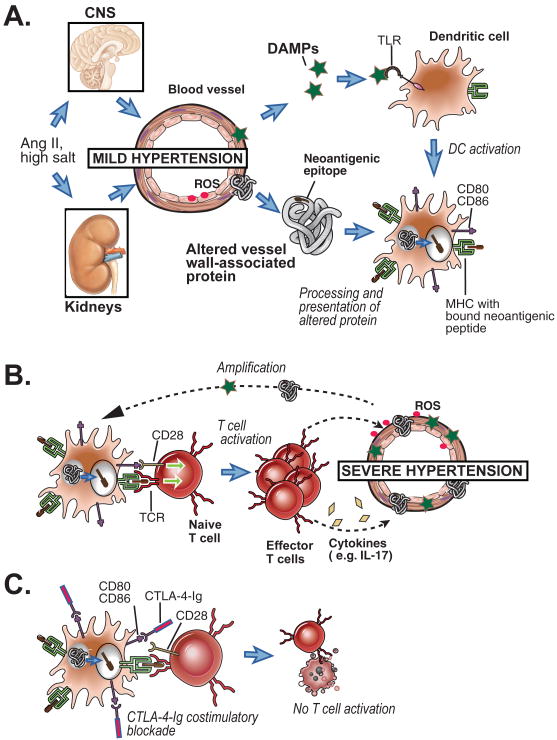Figure.
Hypothetical scheme for induction of T cell responses in hypertension. This scheme is based on a scheme proposed in Harrison et al.10 with a refocus costimulation of T cells. A. Mild hypertension is initially induced by angiotensin II (Ang II) or high salt, leading to limited vascular wall damage, release of DAMPs and altered self proteins. DAMPs activate dendritic cells (DCs) via TLR signaling, inducing costimulator expression (CD80, CD86). The activated DCs process the altered self proteins and displays peptides from those proteins bound to MHC molecules. B. The DC presents the neoantigen peptide/MHC complexes and costimualtors to naive T cells specific for that antigen, and the T cells are activated, proliferate and differentiation into pathogenic effector T cells specific for altered vessel wall proteins. These T cells infiltrate around blood vessels, become reactivated in that location (not shown), and secrete inflammatory cytokines that further promote vascular dysfunction leading to severe hypertension. More neoantigens and DAMPs will be released from the vessels in severe hypertension, amplifying the T cell response. C. CTLA-4-Ig blocks the interaction of CD80 and CD86 with T cell CD28, thereby preventing naïve T cell activation, and theoretically preventing the pro-hypertensive T cell response shown in B.

